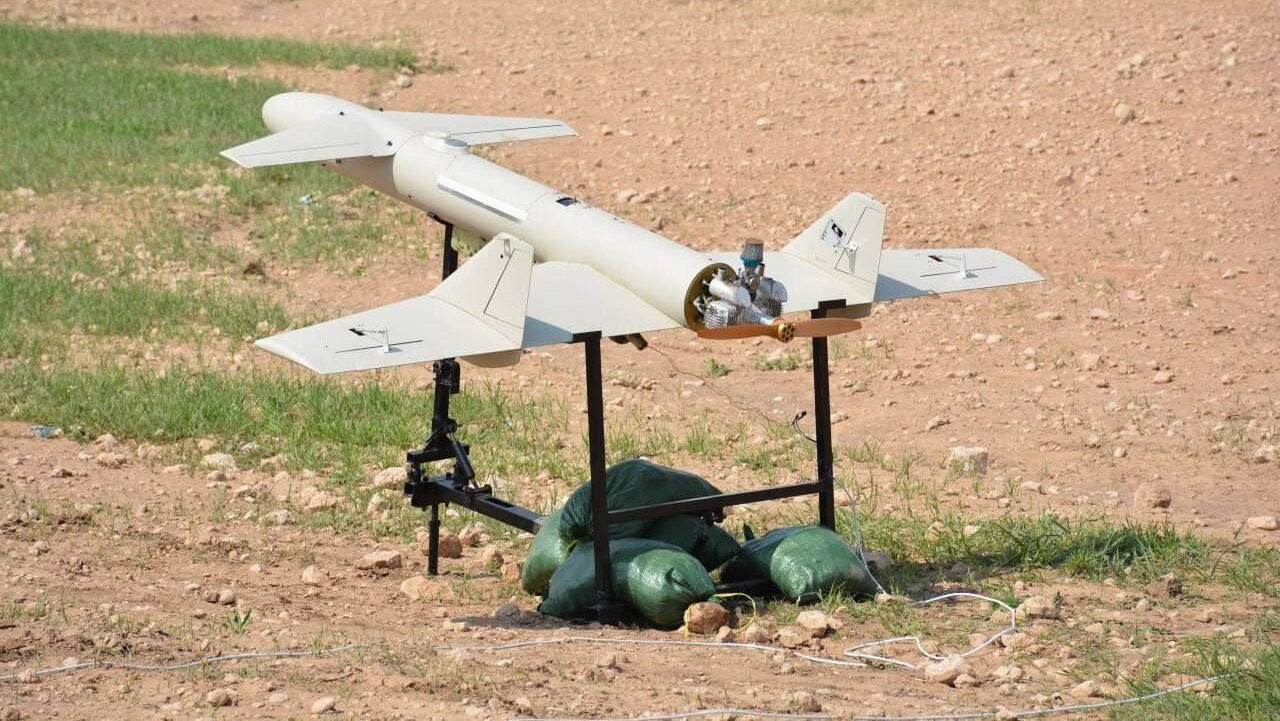On January 5, the Islamic Resistance in Iraq (IRI), an umbrella group of Iranian-backed armed factions, attacked three bases of the United States military with suicide drones.
The first attack targeted al-Harir Air Base in the Erbil province of the northern Iraqi autonomous region of Kurdistan, while he second and third attacks targeted the al-Shaddadi base in the governorate of al-Hasakah and the Green Village base in the Deir Ezzor governorate in northeastern and eastern Syria.
In two separate statements, the IRI said that the attacks were an act of “resistance” against “U.S. occupation” and a response to “Israeli massacres” against Palestinains in the Gaza Strip.
The U.S. Central Command (CENTCOM) didn’t comment on the attacks. However, it revealed in a statement that Iraqi Police in the central province Babylon discovered a land attack cruise missile that was used in an attempt to attack U.S. forces.
A photo shared by the command shows a mysterious cruise missile that is thought to be made by Iran and designated as type “351” by the United States military and intelligence. The missile, which the Iranian-backed Houthis (Ansar Allah) in Yemen call “Quds”, has a range of up to 2,000 kilometers and carries a warhead weighing 450 kg.
“The use of Iranian supplied munitions by terrorist groups within Iraq and Syria endanger Coalition forces and local residents,” CENTCOM said in its statement. “The Coalition is appreciative of the efforts of the legitimate security forces in Iraq for their efforts to prevent future attacks.”
The IRI has targeted U.S. forces in Iraq and Syria with rockets, missiles and drones more than a hundred times since October 17, ten days after the outbreak of the war in Gaza.
Tensions between the group and the U.S. rose earlier this week after Mushtaq Talib “Abu Taqwa” al-Saidi, a senior commander of Harakat Hezbollah al-Nujaba, was killed in a drone strike on the Iraqi capital, Baghdad.
The Iraqi government held the U.S. responsible for the assassination, calling it a “dangerous escalation” and “an aggression against Iraq.” Later, Prime Minister Mohammed Shia al-Sudani announced a plan to end U.S. military presence in Iraq.








attacking yanquis bases wouldn’t do much, like the best case it would put some pressure on their leaders from the public (iraqi pmus should attack a lot during election) – but we all know yanquis have no real power over their government. they did one protest and their government called them terrorists and put all of them on watchlist (to this day).
also, a yanqui life worth dog piss and to be fair, yeah yanquis that agree to occupation and die for another country worth nothing imo.
my point is the iraqi pmus should really hit yanqui leadership and start working on western ngo and cia/mi6 cells in the country. make yanqui leadership unsafe.
that works, when russia hit yanquis hotel in ukraine a lot of them run away like dogs freed. it is so bad for them in ukraine that they are coming to israel lol. that is what iraq should do… remove western cancer seeds.
sudani has threatened us troops with expulsion. lets hope it sticks this time.
yes but he also agree to let the us stay in iraq “forever” but he made that statement jan 2023 when he came to power (so he could have said it to get yanquis off his back). we see what happens.
the kosher nostra anglozionazi mafia entity steals resources from the nations it occupies, murders locals and bribes hoes and has the audacity to complain when the resistance takes a scalpel and slices the puss laden pentacon wound. the free lunch is over and the fiat filth ex saudi mercan toilet paper dollah is getting flushed as a tsunami of debt washes over $lumville ussa to kick start the civil war to end all of pentacon’s global terror. karma time!